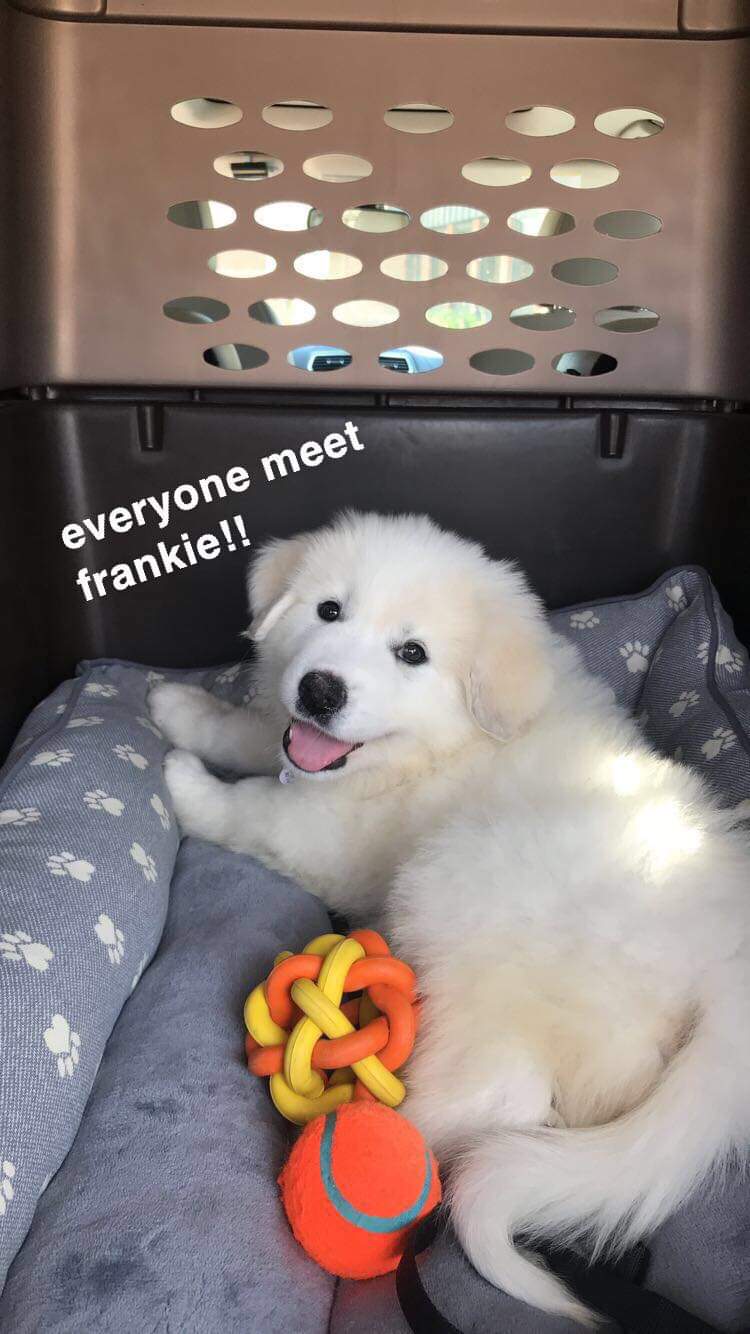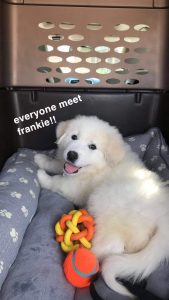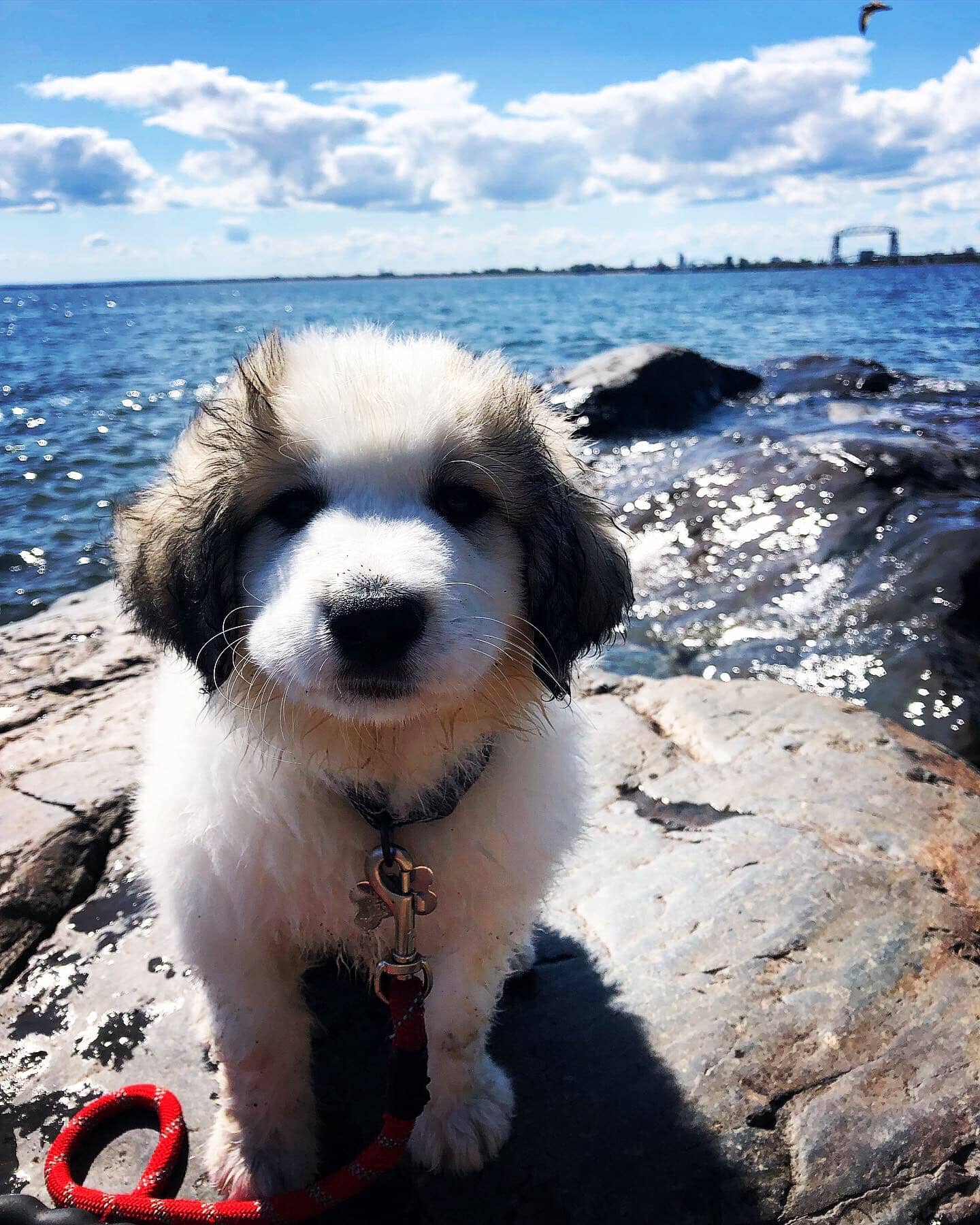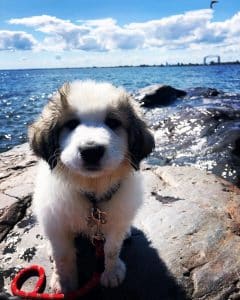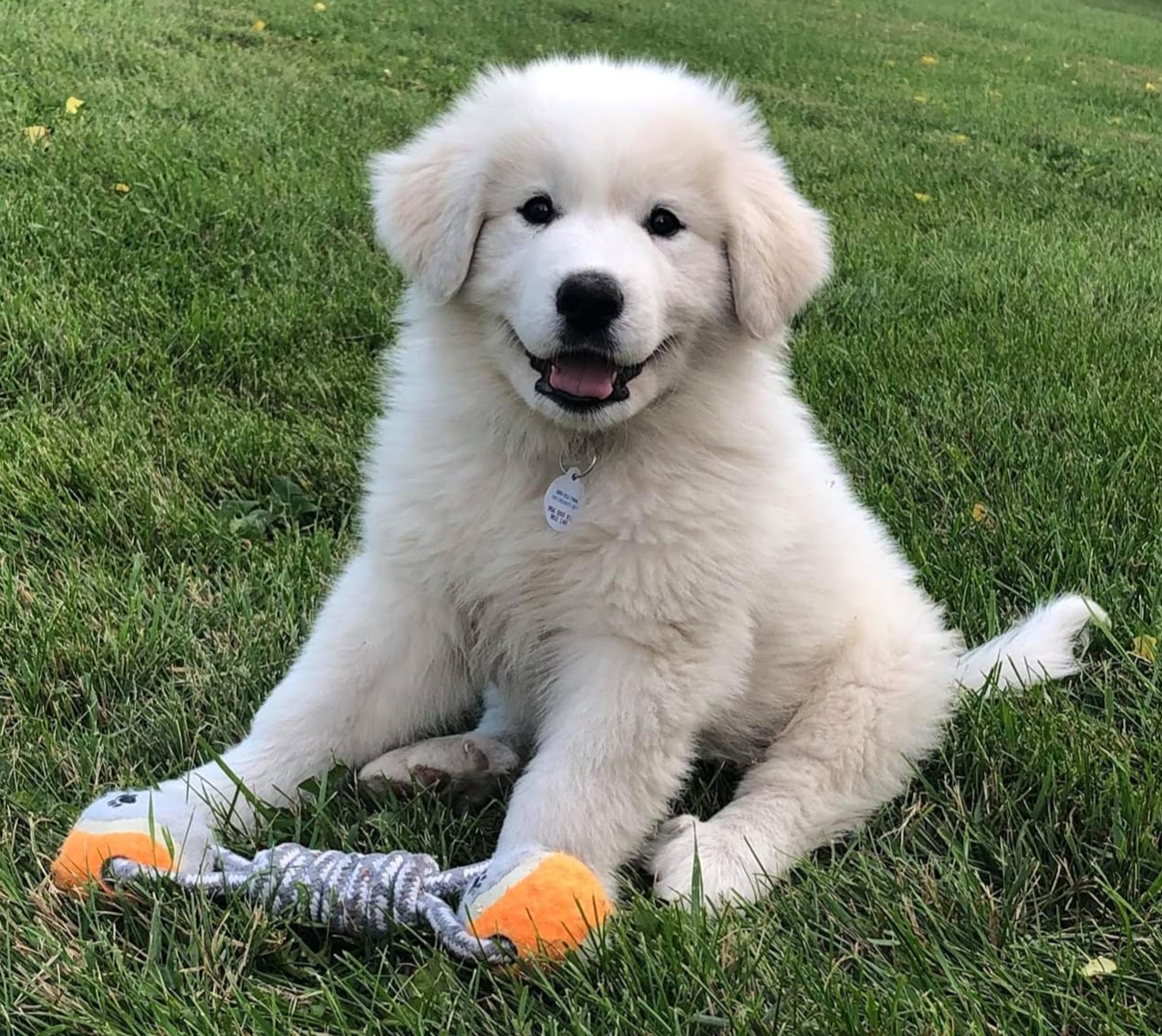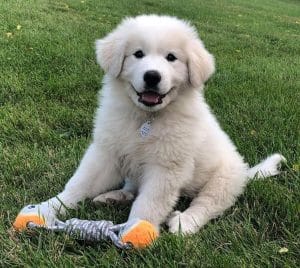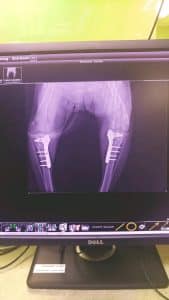
Hip dysplasia in Great Pyrenees and all large breeds can be a problem. One of my colleagues brought home a puppy named Gunner from a pet store 4 years ago. He’s now a fantastic dog with a great personality. This little guy was AKC registered and the pet store even gave contact information for the breeder. It was assumed that this was a high quality puppy. However, at about one year old he began to show issues in his hips and knees and was diagnosed with hip dysplasia. His veterinarian offered a $16k hip replacement surgery. They are waiting on that for now. Later, he sustained injuries in both knees resulting in tibial plateau leveling osteotomy (TPLO) due to genetic knee joint problems. The above picture shows his knees. I’m not sure what the cost was for those surgeries. Currently, he’s now also recovering from a torn muscle around the knee.
Recently, I was contacted by a Great Pyrenees owner several days ago that just had her dog diagnosed with panosteitis which is simply growing pains. She sent me a video of him attempting to walk. I disagreed with the diagnosis based upon the video of this boy being hunched up and not extending it’s hips normally. He’s not from Up North Pyrenees either. I think this will be the start of another long road discovering more significant costly problems.
Poor genetics, obesity, improper dog food, trauma, and a sedentary lifestyle are all risk factors for hip dyplasia and knee issues. Education can minimize most of these problems before they even start.
Up North Pyrenees is committed to eliminating stories like these and hip dysplasia specifically in all of our puppies. Our breeding program has some of the best genetics for hips and knees based upon the best research based testing. That means happier families with pain free active dogs doing their jobs. Our current sire is Quiero Des Sentes Magala is a Belgian import that is clear of all genetic issues affecting Great Pyrenees. His hips and knees are in the top 5% of all dogs tested and our dams are in the top as well. Our next generation of dams is on the horizon.
We endeavor to do all things to the glory of Christ and for your benefit. This takes a lot of thought, planning, finances, relationship building and hard work. Up North Pyrenees doesn’t take short cuts and we hope you will consider us when you buy your next puppy. We are currently accepting deposits for future litters. You and your family will be glad you did.


